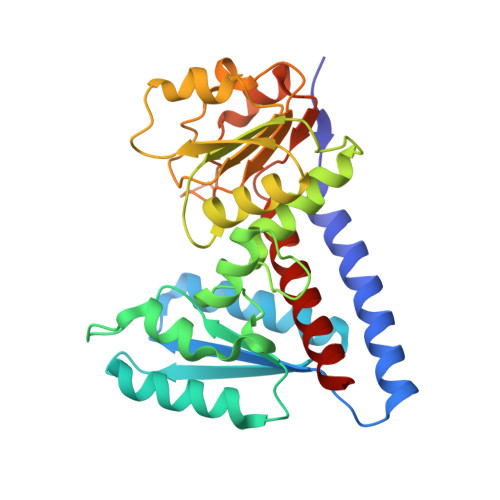An assessment of three human methylenetetrahydrofolate dehydrogenase/cyclohydrolase-ligand complexes following further refinement.
Bueno, R., Dawson, A., Hunter, W.N.(2019) Acta Crystallogr F Struct Biol Commun 75: 148-152
- PubMed: 30839287
- DOI: https://doi.org/10.1107/S2053230X18018083
- Primary Citation of Related Structures:
6ECP, 6ECQ, 6ECR - PubMed Abstract:
The enzymes involved in folate metabolism are key drug targets for cell-growth modulation, and accurate crystallographic structures provide templates to be exploited for structure-based ligand design. In this context, three ternary complex structures of human methylenetetrahydrofolate dehydrogenase/cyclohydrolase have been published [Schmidt et al. (2000), Biochemistry, 39, 6325-6335] and potentially represent starting points for the development of new antifolate inhibitors. However, an inspection of the models and the deposited data revealed deficiencies and raised questions about the validity of the structures. A number of inconsistencies relating to the publication were also identified. Additional refinement was carried out with the deposited data, seeking to improve the models and to then validate the complex structures or correct the record. In one case, the inclusion of the inhibitor in the structure was supported and alterations to the model allowed details of enzyme-ligand interactions to be described that had not previously been discussed. For one weak inhibitor, the data suggested that the ligand may adopt two poses in the binding site, both with few interactions with the enzyme. In the third case, that of a potent inhibitor, inconsistencies were noted in the assignment of the chemical structure and there was no evidence to support the inclusion of the ligand in the active site.
Organizational Affiliation:
Division of Biological Chemistry and Drug Discovery, College of Life Sciences, University of Dundee, Dundee DD1 5EH, Scotland.
















